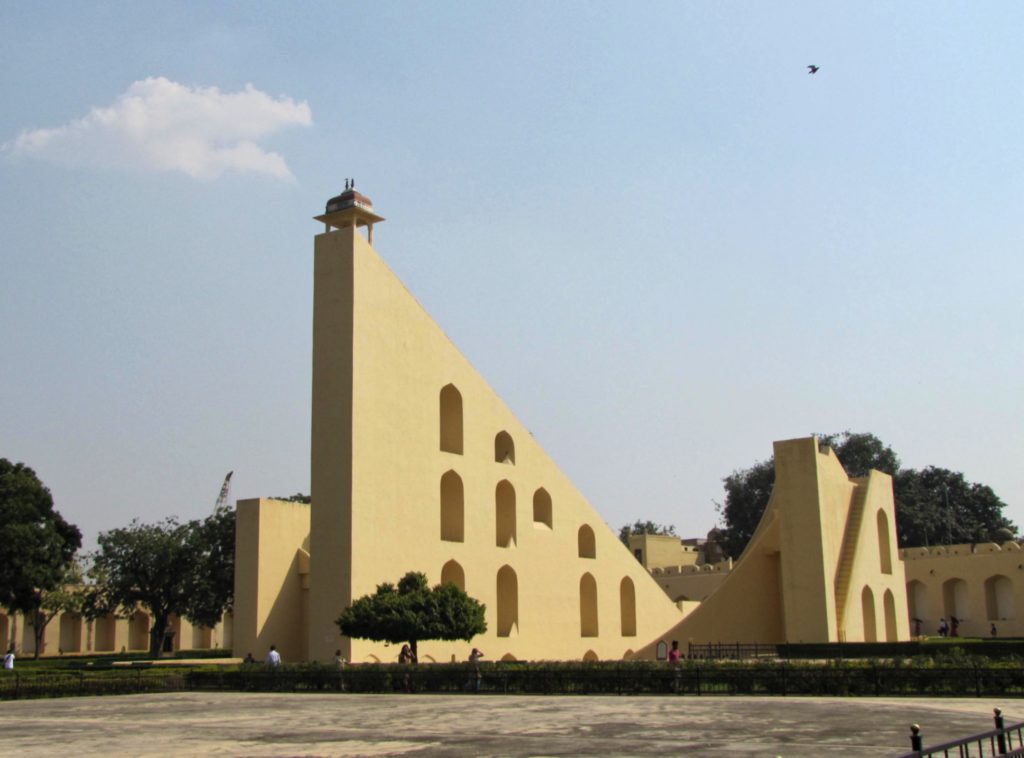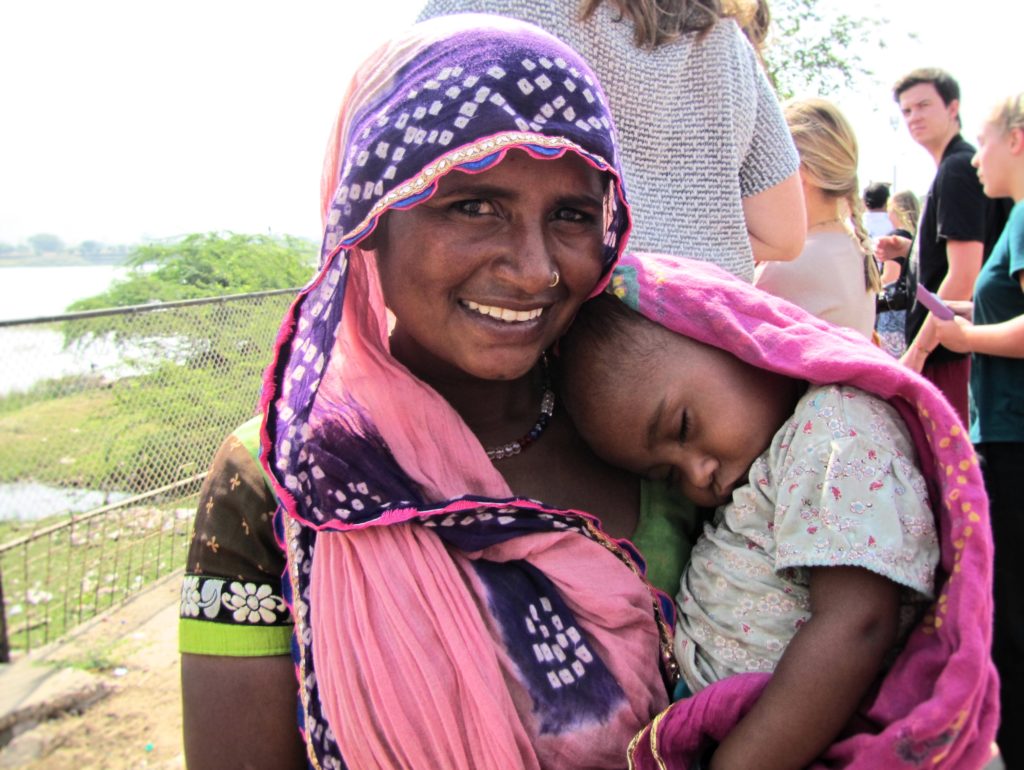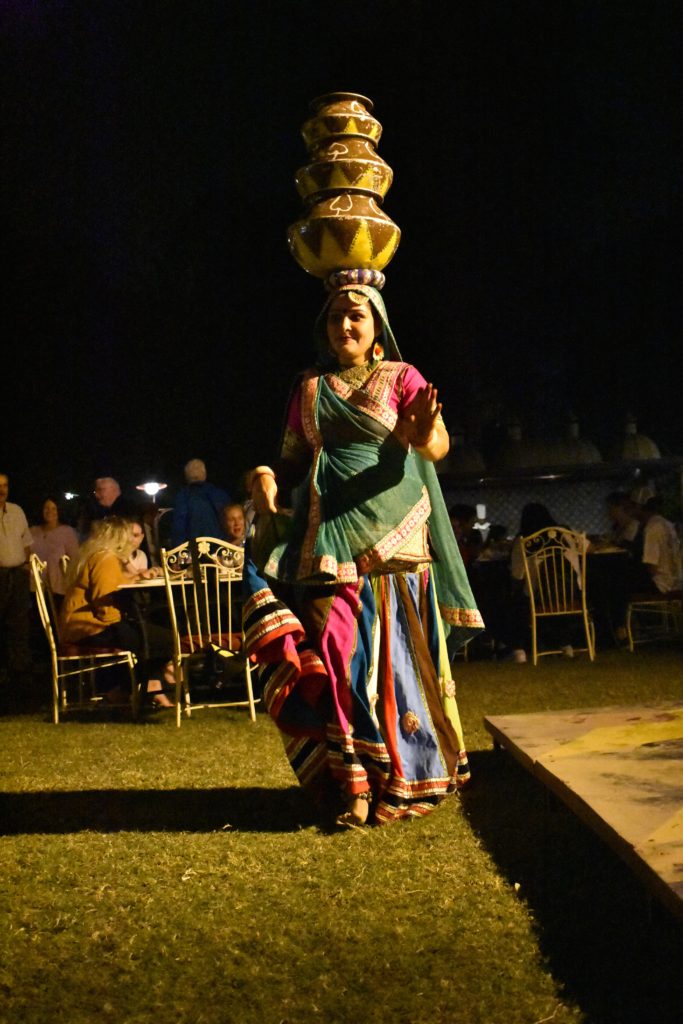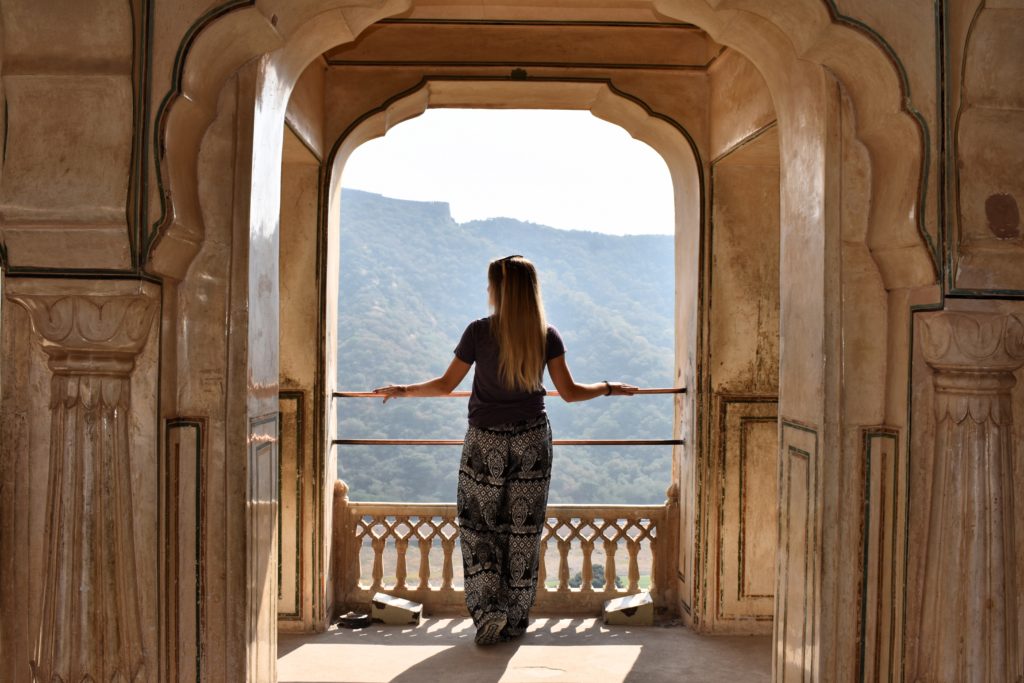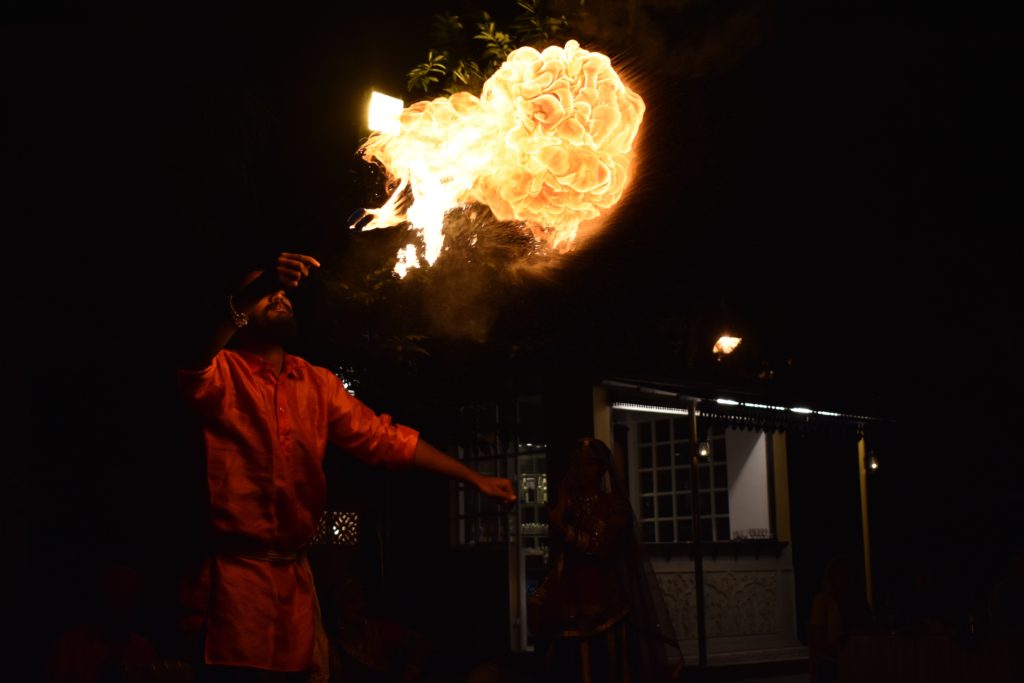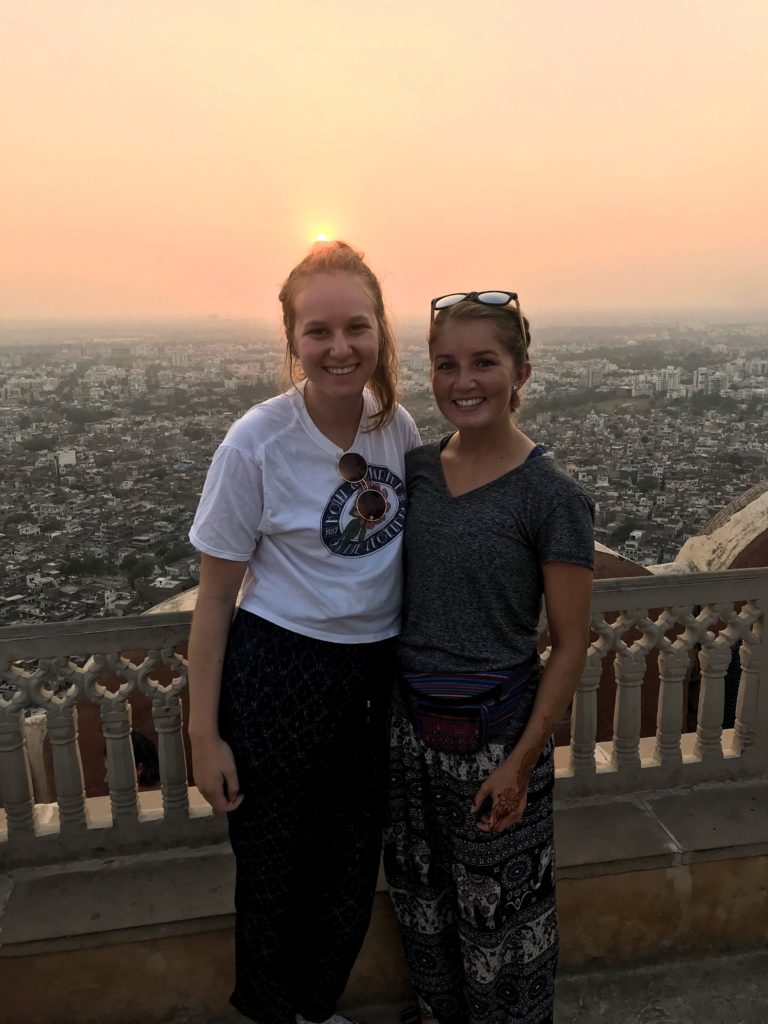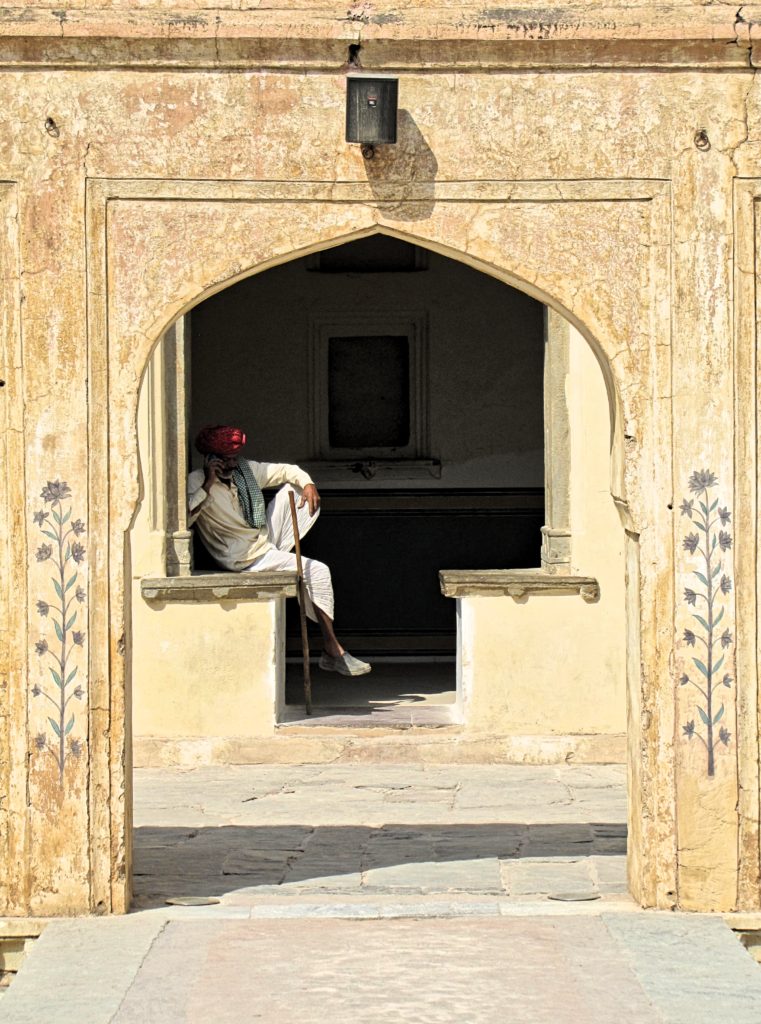2 Days in Jaipur, India

While in India, I had the opportunity to visit the three cities that are part of the Golden Triangle of India – Jaipur, Agra, and Delhi. Jaipur, the capital of the state of Rajasthan, was founded in 1727 and is said to be the first planned city of India. It is filled with remarkable fortresses and surrounded by stunning hilltops. Jaipur is also referred to as the Pink City. This is because most of the walls throughout the city were painted with terracotta pink to welcome the Prince of Wales in 1876 as a sign of hospitality. The nickname stuck and most of the city walls and structures are still painted in this earthen pink colour. Jaipur is a beautiful city with tons of history and amazing people.
Nahargarh Fort
Nahargarh Fort is situated in the Aravalli Hills, which is one of the oldest mountains ranges in the world. Maharaja Sawai Jai Singh II built the Nahargarh Fort in 1734. Sawai Ram Singh then extended it in 1868. The fort was built as a strong defense for Jaipur but was never attacked. It is also known as the Tiger Fort since tigers were believed to have roamed in this area. The fort is well known for its extended wall shown in the picture below that connects it to the Jaigarh Fort. One section of the fort, called Madhavendra Bhawan, has 12 identical suites for Sawai Madho Singh’s 12 queens. He had the chambers built in such a way that when he visited one of the queens, the others could not find out about it.
I loved having the chance to walk along the rooftop terrace. It allowed for breathtaking views of the scenic surroundings and an interesting perspective on the city down below. Rainwater coming through the hills of Nahargarh is collected by a step-well near the fort entrance. Small channels that are built into the step-well filter the water. The fort is covered in rhesus macaques and grey langur monkeys. The rhesus macaques chased a few of us after we tried to take their picture so be sure not to get too close! Peacocks can also be seen outside the gate and on the way to the fort.
Nahargarh Fort is open from 10:00am – 5:30pm and costs 50 Rupees for foreigners. A wax museum can be found right outside the entrance to the fort. We never had to chance to go but other people made it sound quite interesting!


City Palace
Maharaja Sawai Jai Singh II, who was known as the founder of Jaipur, constructed City Palace between 1729 and 1732. This complex is spread over a large area and consists of many buildings, courtyards, temples, museums, and gardens. Similar to the rest of the Pink City, most of the buildings here are built from red and pink sandstone adding to the beauty of the palace. The different structures reflect the fusion of Mughal and Rajput architecture. The palace is split into two main parts. One section is open to the public and the other is for the residence of the royal family who still live there today.
The Diwan-i-Am or the “Hall of Public Audience” is one of the most important sections of the palace. This chamber, painted in red and gold, is where the royal throne is. This was once the seat of the Maharaja or kings during public audiences. The king ruled the region from this throne. We were not able to take photographs in here so I guess you will have to visit for yourself!
Another chamber in the palace is the Diwan-i-Khas or the “Hall of Private Audience.” This chamber is absolutely stunning with marble floors and many crystal chandeliers. There are two huge silver vessels each weighing 750lbs. They are made from 14,000 melted silver coins and are in the Guinness Book of World Records as the largest silver vessels in the world.
I visited two of the museums during my visit to the City Palace. There is a museum filled with royal textiles called the Mubarak Mahal. Plenty of dresses worn by queens and kings are found here. Another museum here is called the Silehkhana. It is dedicated to weapons including handguns, swords, knives, arrows, and more.
My favourite pieces of the City Palace are the four decorated gateways in the third courtyard. Each small gate represents a different season. The Mor Gate (or Peacock Gate) is the autumn season, the Lotus Gate is the summer season, the Leheriya Gate is the spring season, and the Rose Gate is the winter season. The design and detail on each gate is amazing. I have included a picture of each gate below!
The City Palace is open most days from 9:30am – 5:00. The prices vary based on which ticket you buy and are anywhere from 150 – 500 Rupees.

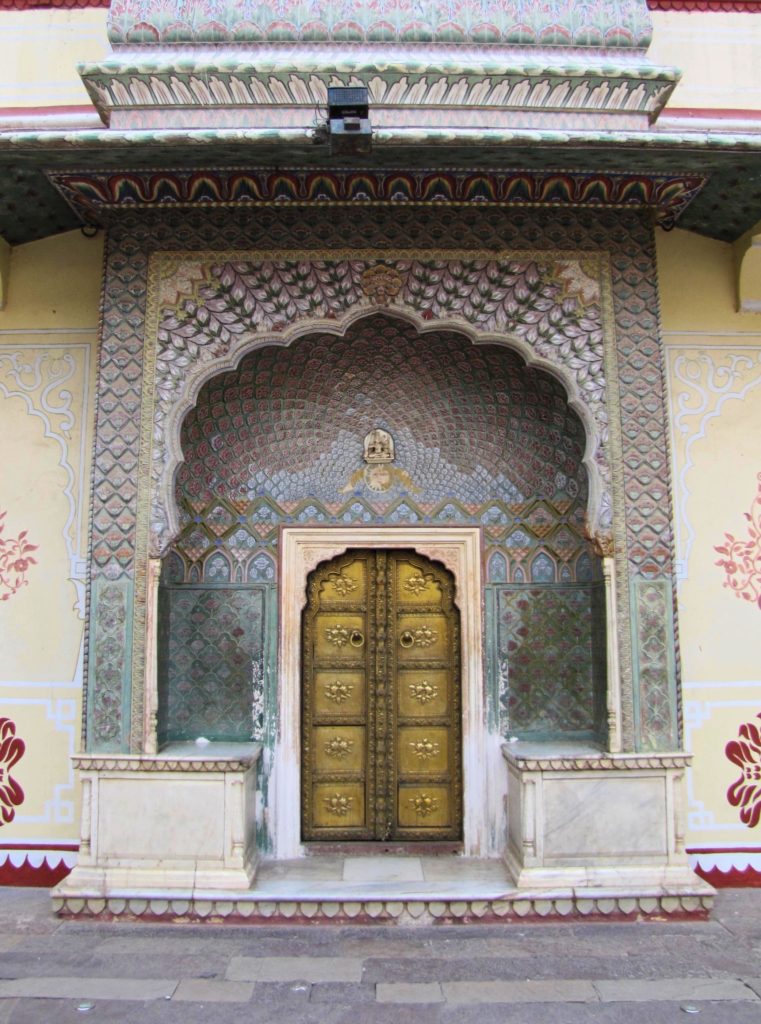
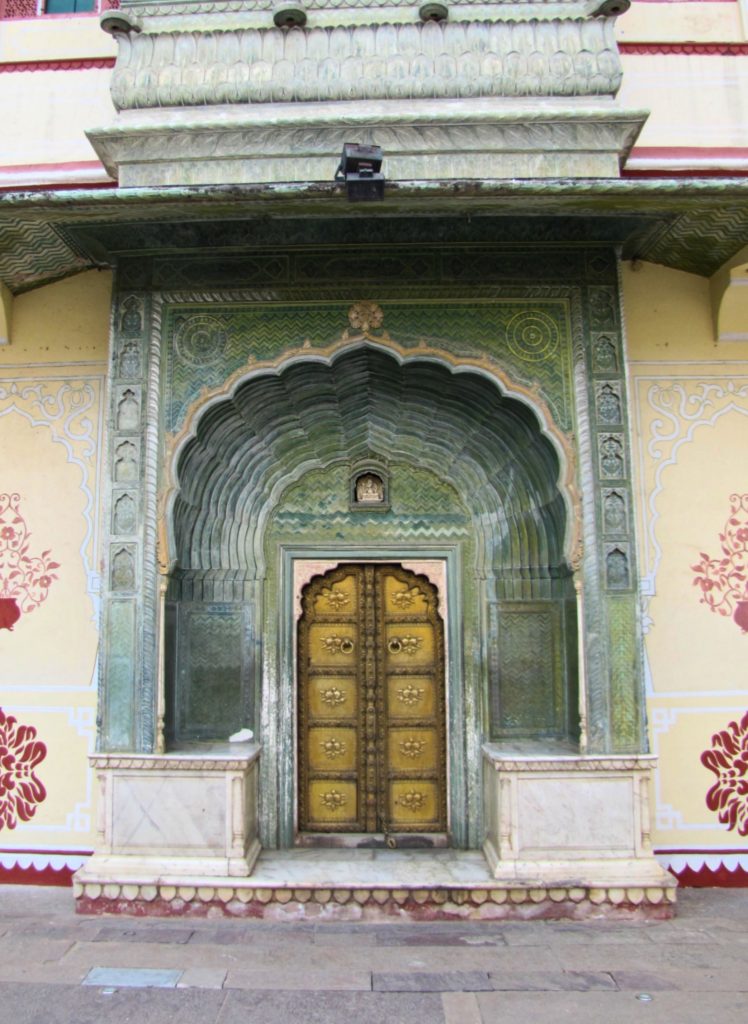

Amber Fort
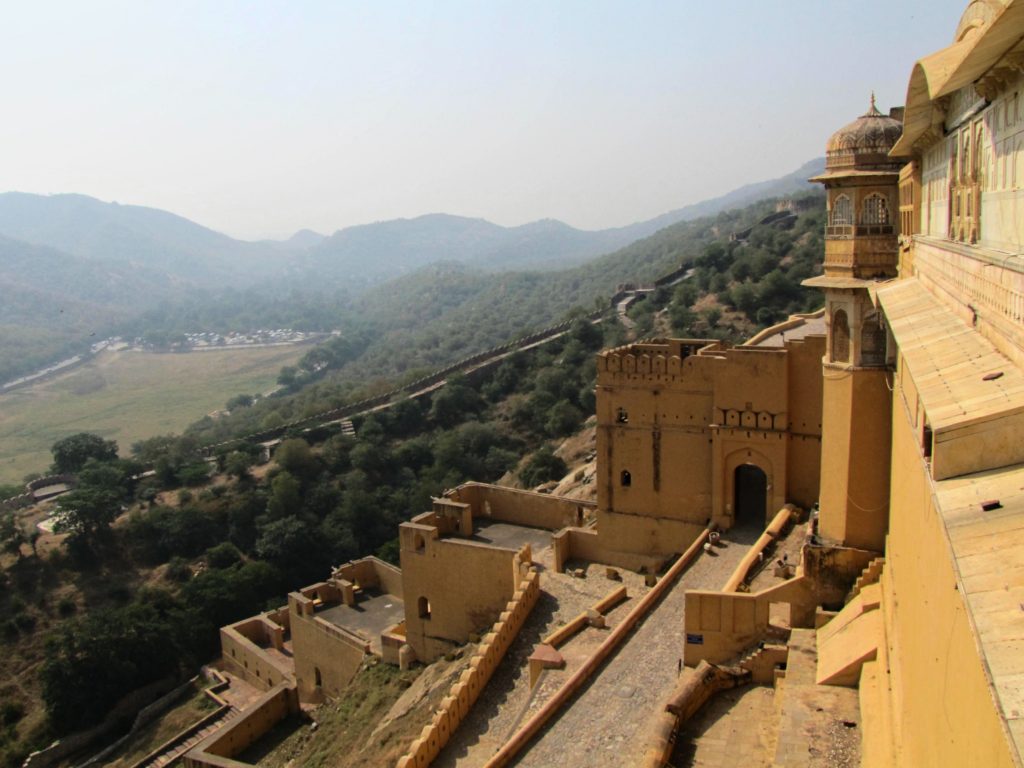

The Amber Fort was built in 1592 out of different colours of sandstone and marble. Raja Man Singh I, one of the first war chiefs of the general, built it high on a hill that is 11 km from Jaipur. The fort, which is divided into four main sections, blends both Hindu and Rajput elements and architecture. Each section has its own courtyard and magnificent entry gate.
My favourite section of the Amber Fort is the Sheesh Mahal also known as the Mirror Palace. The walls and ceilings are filled with beautiful paintings and flowers made with mirror glass. Other sections include Diwan-e-Khaas and Sukh Niwass. Each part of the fort is unique and filled with history.
We had to take jeeps up the narrow roads to the fort entrance. There are many vendors trying to sell all kinds of souvenirs. The fort is open from 8:00am – 6:00pm and costs 200 Rupees for a foreigner.
Please DO NOT RIDE THE ELEPHANTS at Amber Fort or anywhere else in the world! It may seem like a must do tourist attraction but it is very harmful to these magnificent animals. They are forced to work long days and the herders are very aggressive towards them. I noticed several cuts on more than one elephant. The heat and long workdays are very hard on the elephants and lead to over exhaustion and elevated stress. There is a reason elephants are endangered so please don’t participate in riding them. If you would like to learn more about this important issue click here.
If you are interested in interacting with elephants while in Jaipur, I recommend EleFantastic. Click here to learn how you can interact with elephants by feeding, cleaning, and walking with them in an ethical and responsible way.
Jal Mahal
Jal Mahal is the beautiful “water palace” in the middle of the Man Sugar Lake in Jaipur. It was built in 1750 and for years has been one of the most photographed monuments in Jaipur. Madho Singh built this palace as a lodge for him and his friends during their duck hunting parties. In the 18th century his son, Madho Singh II, enhanced the palace by adding the courtyard and altering the exterior. Though it looks like there are only a few stories, the palace is a five storied building with four of the floors being submerged underwater. The palace was constructed from pink sandstone and lime mortar that has prevented water seepage for over 25 years.
The Jal Mahal is not open for visitors but is said to be in the midst of construction into an ultra exclusive restaurant. I recommend stopping for a few photos when visiting the Amber Fort as they are on the same side of Jaipur. There are a few market stalls around the lake to buy souvenirs and clothing.

Jantar Mantar/Observatory
Jantar Mantar means “calculating instrument.” This is the largest of the five astronomical observatories built in India. This UNESCO World Heritage Site was completed in 1734 by the Rakput king Sawai Jai Singh II – the same king who built the City Palace. There are 19 different architectural astronomic instruments here built mostly out of local stone, marble, and metal. They are used for measuring time, tracking major stars, predicting eclipses, and more. Three main classical celestial coordinate systems are used including the equatorial, ecliptic, and horizon-zenith local systems.
Here you can find the world’s largest sundial called the Samrat Yantra! It stands 27 meters tall and the shadows move visibly at 1mm per second making it very easy to read the time. Jantar Mantar is open from 9:30am to 4:30pm and costs around 100 Rupees for foreigners. Click here to learn more!
